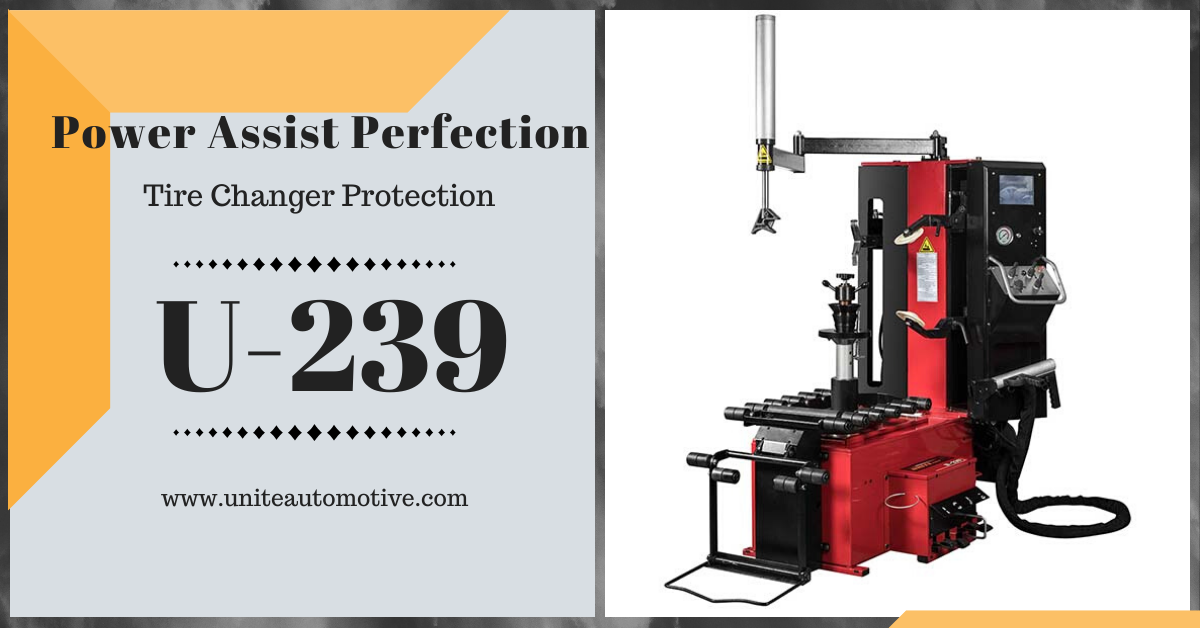
Power Assist Perfection of Tire Changers: Are They Necessary for your auto repair shop?
22/11/2019 | Unite Auto Equipment
There comes a time in many auto repair mechanics’ lives where they must choose and use a tire changer. Do you really need a tire changer? Isn’t it pretty easy to just change the tire from the rim yourself? Actually, an excellent tire changer is not only an asset to your shop, but it may also well be a necessity, at the same time bring more business to you. Read on to learn more.
Do You Need a Tire Changer in Your Auto Repair Shop?
Overall, changing a tire from the rim without a tire changer is not profitable. The process is time-consuming, toilful, difficult, and dangerous for the mechanic, the wheel, and the tire, and may even cause casualties. Not to mention, it is nearly impossible to complete this process without damaging the tire or rim.
The tire changer completes the professional garage shop. Tire changers make changing a tire easier than ever, as this once-dreaded chore used to be very complex and difficult. With a great tire changer, your tire changes will become one of the most profitable services you offer, and no longer time-consuming, toilful, dangerous, complicated, difficult operations.
When it comes to shopping for a new tire changer, the most important things to consider are whether the product is commercial-grade and if it’s ready for years of reliable use.
How to Change A Tire Without A Tire Changer
You may ask yourself: how hard could changing a tire from a rim really be? Is this machine actually necessary? While it is possible to change a tire yourself, it is considerably more difficult than using a machine.
In order to change a tire from the rim yourself, you will need 2 4-foot pry bars with flat ends that are designed for dismounting a tire, a way to break the rim away from the bead, a rubber hammer, and a valve core removal tool.
Use the valve core removal tool to take out the valve core, which will release the pressure. Then, you will need to break the bead (where the tire connects to the rim). This must be done from both sides. Next, you will need to pry the tire off of the rim by sticking one pry bar between the rim and the tire, then laying it flat across the rim. Leave the first pry bar and hold it stead. Move the second bar around the rim, then leapfrog the two bars around the rim.
Then, do the same thing on the other side. Beat the tire off the rim with a rubber hammer. After that, you will need to inflate the tire, making sure the bead seals back to the rim. Be careful not to scratch the rims with the pry bars or the rubber mallet. After you’ve done all of this, you will need to do the entire process in reverse to put the new tire on. Then, you will need to balance the tire.
Overall, the easiest way to remove a tire from the rim is by using a tire changer machine.
How To Choose the Right Tire Changer
When you’re ready to purchase a tire changer, there are a few things to consider. First, what size and types of wheels do you plan on servicing? This is crucial information to know because this will help you choose the right tire changer for your application.
●What is the largest rim diameter that you will be servicing? Typically, the rim diameter range will be between 20-22 inches, however, some tire shops can service up to 28 inches. Keep this in mind while shopping to ensure you choose the right product.
●What type of wheels will you be changing? If you will be servicing aluminum and alloy rims, you will need a rim clamp tire changer. These are the only type of tire changer that can handle these types of rims without risk of damage.
●Will you be servicing performance tires? If so, choose a tire changer with a mounting helper arm. This will help you to mount and dismount low profile and thick-walled tires. These machines will be particularly profitable in areas where these types of wheels are more popular. Not many tire shops offer this service, so being able to handle performance tires will open up a new source of potential income.
●What about run-flat tires? These tires allow the driver to keep on driving even when the tire is deflated. Run-flat tires aren’t as popular as low-profiles, however, their popularity is growing. For these tires, you will need a tire changer with dual-mounting arms. Since you won’t see many of these tires in your shop, this investment will result in a slower pay-off, unlike the other tire changers that will pay for themselves more quickly.
Keep in mind what kind of tire shop you want to be and what type of tires you want to service, and this will help you in choosing the right model.
Conclusion
Choosing the right tire changer for your shop is a very important decision. Here at Unite Automotive Equipment, we are here to help answer all your questions and help you choose the right model of tire changer to suit your needs and your business.

